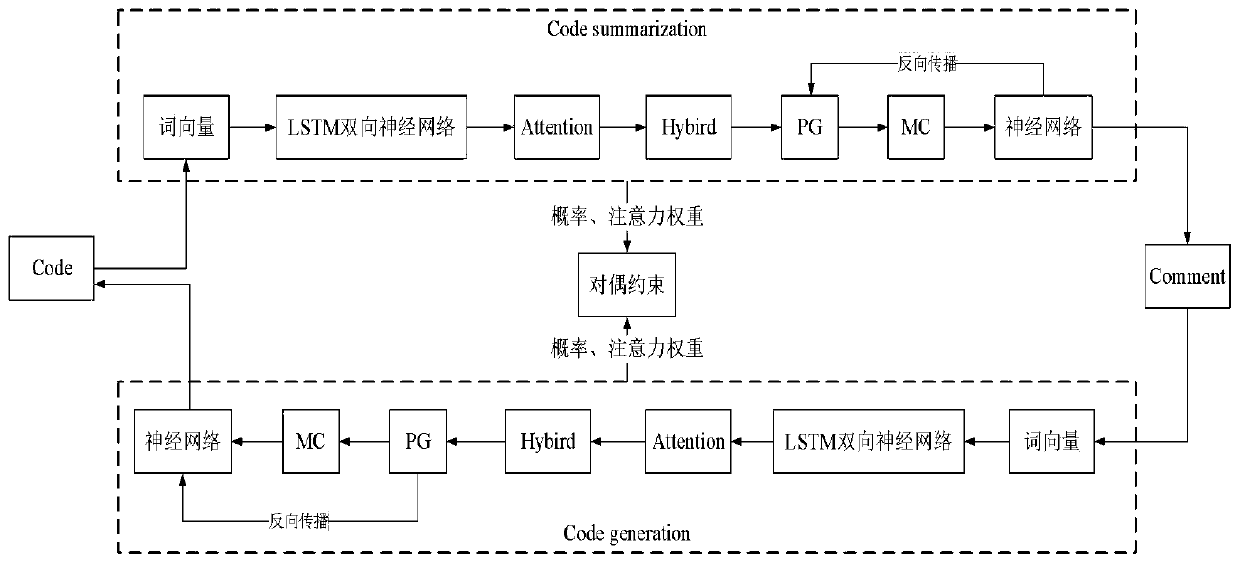Code-annotation conversion method based on dual reinforcement learning
A technology of reinforcement learning and code conversion, applied in the field of automatic software development, can solve problems such as deviation and easy exposure, and achieve the effect of improving accuracy
- Summary
- Abstract
- Description
- Claims
- Application Information
AI Technical Summary
Problems solved by technology
Method used
Image
Examples
Embodiment Construction
[0040] In order to make the technical solutions and advantages of the present invention more clear, the technical solutions in the embodiments of the present invention are clearly and completely described below in conjunction with the drawings in the embodiments of the present invention:
[0041] Such as figure 1 A code-comment conversion method based on dual reinforcement learning is shown, a code-comment conversion method based on dual reinforcement learning:
[0042] Code conversion into annotation phase:
[0043] Step 1: Convert the code to a word vector representation.
[0044] Step 2: Use the LSTM bidirectional neural network to perform feature extraction on the sequence and structure information in the code word vector.
[0045] Step 3: Use the attention mechanism (Attention) to assign weights to each word in the word vector to obtain the weight of each word.
[0046] Step 4: Fusion each word vector and its weight in Hybrid.
[0047] Step 5: Calculate the probabilit...
PUM
 Login to View More
Login to View More Abstract
Description
Claims
Application Information
 Login to View More
Login to View More - R&D
- Intellectual Property
- Life Sciences
- Materials
- Tech Scout
- Unparalleled Data Quality
- Higher Quality Content
- 60% Fewer Hallucinations
Browse by: Latest US Patents, China's latest patents, Technical Efficacy Thesaurus, Application Domain, Technology Topic, Popular Technical Reports.
© 2025 PatSnap. All rights reserved.Legal|Privacy policy|Modern Slavery Act Transparency Statement|Sitemap|About US| Contact US: help@patsnap.com



